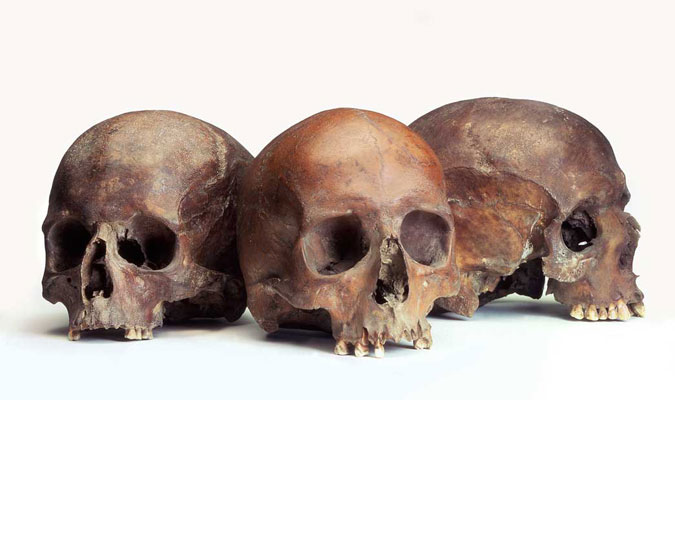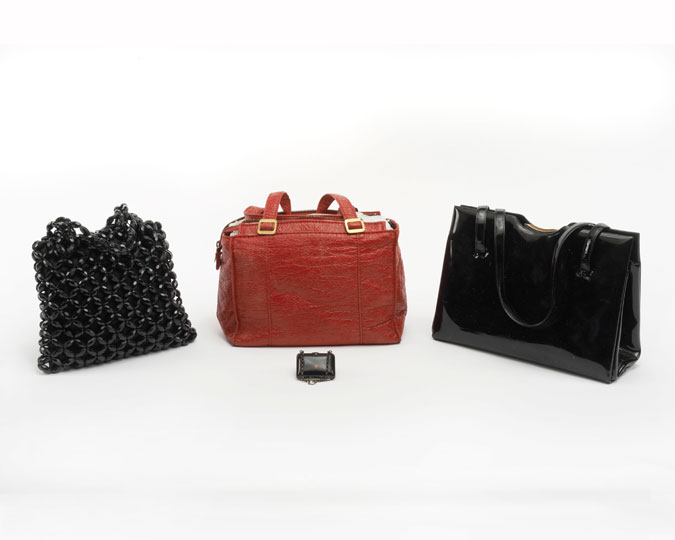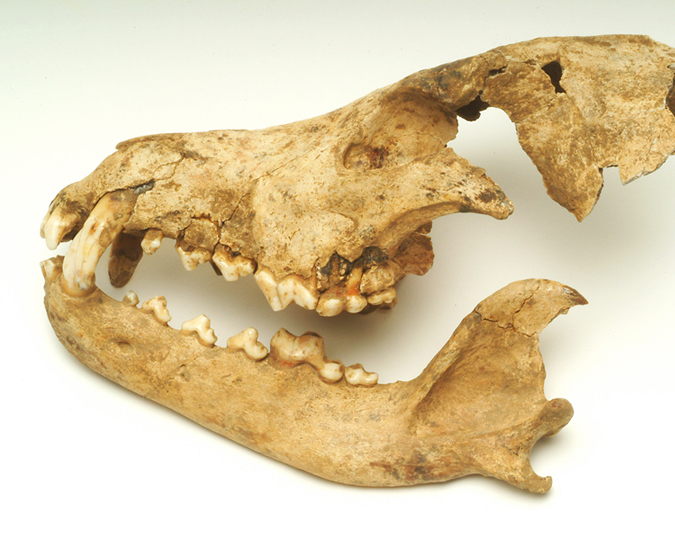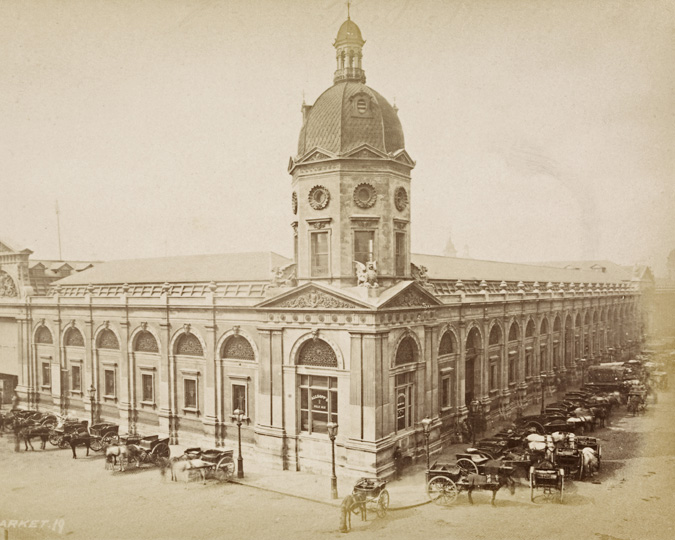This is the skeleton of a girl who was 14 years old when she died. She had blue eyes. She was born in the southern Mediterranean, and lived in London for at least four years before her death and burial, on what is now Lant Street in Southwark. In her short life, she had suffered from rickets and gum disease, but she was healthy enough to grow to 5′ 3” by the time she died. We don’t know her name or exactly what she looked like – but that’s understandable, given that she lived in the Roman city of Londinium, over 1500 years ago.
Ground-breaking scientific research at the Museum of London has, for the first time ever, created a detailed “picture” of the inhabitants of Roman London. Using evidence “written” in their teeth, bones, DNA and burial, we’ve uncovered the extraordinary diversity of these ancient Londoners.
This project has combined multiple disciplines, from ancient DNA analysis to traditional archaeology, to build up astonishingly detailed information about the ancient human remains in the Museum of London collection. Curators at the museum have worked with Durham University, Kings College London, Natural Environment Research Council and McMaster University in Canada, blending cutting-edge science including:
- Ancient DNA (aDNA) analysis, which looks at the genetic instructions “written” in the teeth and bones of these Londoners. A tooth from each skeleton was sent to McMaster University in Canada for aDNA analysis. Their work established the hair and eye colour of each individual, their chromosomal sex, and identified the diseases they were suffering from – the majority of the people below suffered from gum disease. McMaster University also studied the mtDNA of each person.
- Mitochondrial DNA (mtDNA) was also extracted, but is only inherited from a persons mother. As its information does not change when it is passed from mother to child, it provides information about ancestry – although this descent can be very ancient, stretching back hundreds of generations.
- Mobility stable isotopes. The chemical elements contained within drinking water and foodstuffs are captured by the growing teeth during childhood. Study of the chemicals in the dental enamel provide geological information about where a person may have grown up. Durham University analysed the dental enamel to track the origins of each person.
- Dietary stable isotopes. These are the chemical elements contained in foodstuffs and are captured by various body tissues as we age. Their analysis can reveal what people ate throughout their lives, and where they were as they shifted from breastfeeding to an “adult” diet. The Roman teenager above ate a diet that included meat, fish, vegetables and cereals that match the dietary isotopes of other people from Roman London. By analysing a sample from her rib bone, researchers at Durham University were able to discover that she had lived in Londinium, eating these foods, for at least four years.
These techniques were combined with study of their health and other archaeological evidence, like where and how each person was buried – making this is the first multidisciplinary study of the inhabitants of a Roman city anywhere in the Empire. We’re building on aDNA and stable isotope analysis that’s been done of Roman human remains in Italy and Yorkshire, but this unique combination reveals an extraordinary amount about some Roman Londoners.
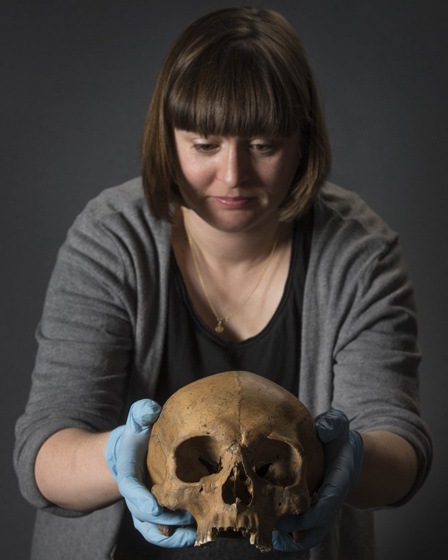
Dr. Rebecca Redfern holds a Roman skull that was tested for the Written in Bone exhibition.
The next skull – held by yours truly - is another example of the secrets this research can reveal. This man may have been killed in Londinium’s amphitheatre – where Roman Londoners watched bloody gladiatorial games and the execution of criminals. This violent death is suggested both by injuries to his skull at the time of death, and because his head was buried in a pit. He was found to have had black hair and dark brown eyes, and was likely to have been born outside of Britain. The mtDNA showed connections to eastern Europe and the Near East. aDNA evidence shows that he suffered from periodontal (gum) disease.
This skull is one of thirty-nine discovered during excavations at London Wall in 1989, very close to the current Museum of London sites. The human remains, all male and between 18-45 years old, were found in pits in what was then the Walbrook River valley.
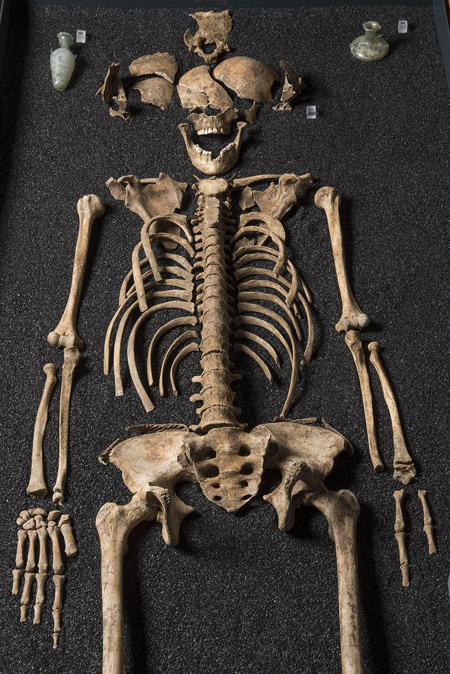
The Lant Street Teenager laid out alongside her grave goods.
This is the same teenage girl – known as the “Lant Street Teenager”. She had blue eyes, and her maternal ancestry can be traced to south-eastern Europe and west Eurasia, at the eastern fringes of the Roman Empire. However, stable isotope evidence shows that she was born in the southern Mediterranean, and travelled to Londinium at least four years before she died- proof the cosmopolitan and diverse nature of ancient London. Her burial is unique in London, and has parallels to funerary traditions seen elsewhere in Europe. Many soldiers from these parts of the Empire were stationed in Londinium. Perhaps she was a soldier’s daughter, his wife, or even a beloved female slave.
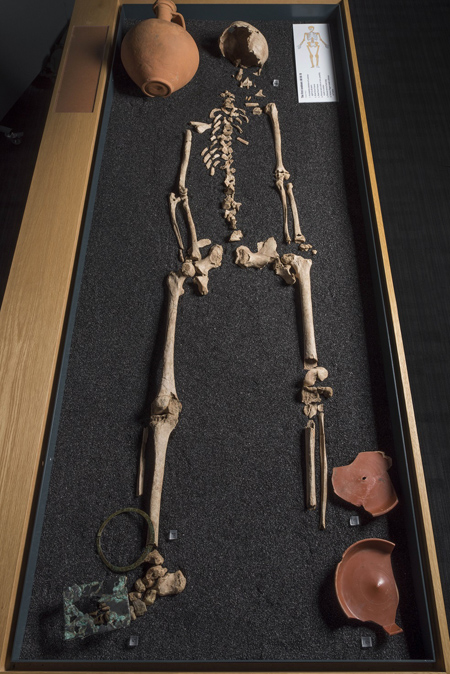
The Harper Road woman on display in the Written in Bone exhibition.
This skeleton is known as the Harper Road woman, because she was found in excavations on Harper Road, Southwark in 1979. A dark-haired and dark-eyed European, she was between 26 and 35 years old when she died, around AD 50-70. We can see she was high status due to her valuable grave goods, but the aDNA analysis reveals a secret even she may not have known: although physically female, her chromosomes are male. This is in line with modern scientific suggestions biological sex is a spectrum between male and female.
You can see the Harper Road woman on display in the Roman London gallery at the Museum of London.
Love Roman London? Want to get updates about the city's past straight to your inbox? Sign up for our free Archaeology newsletter.
Details of research
Click to read the peer-review standard report on the aDNA work, from McMaster University. (2.4MB PDF, opens in new window)
Arthur, N., Gowland, R. and Redfern, R. 2016. Coming of Age in Roman Britain: Osteological Evidence for Pubertal Timing. American Journal of Physical Anthropology 159.4, 698-713.
Budd, P. no date. Combined O-, Sr- and Pb-isotope analysis of dental tissues from a Neolithic individual from Shepperton and an Iron Age individual from Southwark, London. Archaeotrace Ltd Report No. 106. Re-interpretation of data by J.Evans and J. Montgomery pers.comm 2015.
Redfern, R.C., Gröcke, D.R., Millard, A.R., Ridgeway, V., Johnson, L. and Hefner, J.T. 2016. Going south of the river: a multidisciplinary analysis of ancestry, mobility and diet in a population from Roman Southwark, London. Journal of Archaeological Science 74, 11-22.
Redfern, R.C. and Bonney, H. 2014. Headhunting and amphitheatre combat in Roman London, England: new evidence from the Walbrook Valley. Journal of Archaeological Science 43, 214-226.
Shaw, H., Montgomery J., Redfern, R., Gowland, R. and Evans, J. 2016. Identifying migrants in Roman London using lead and strontium isotopes. Journal of Archaeological Science 66, 57-68.








